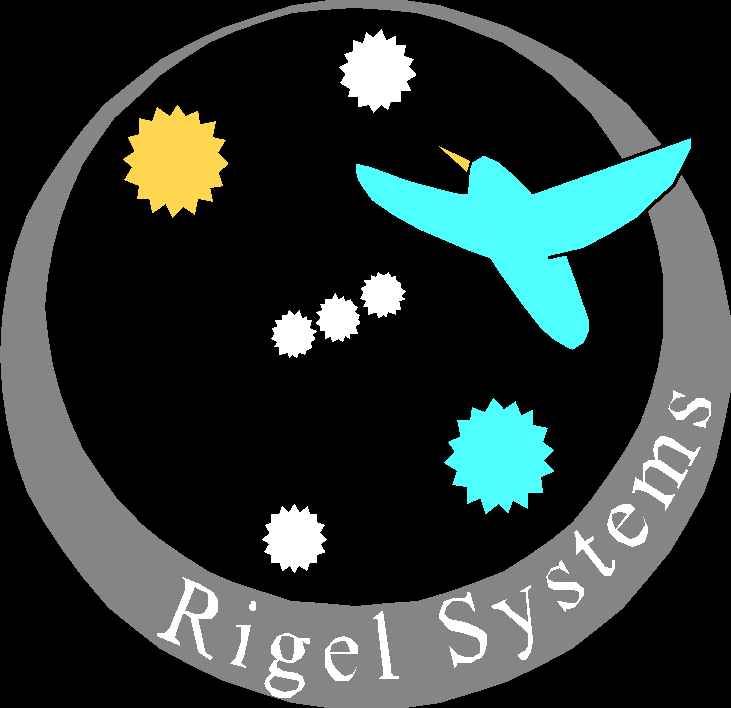
|
Rigel
Systems Manufacturer of innovative astronomy accessories |
Home | Manuals | Skychart | Astro Projects | Customer Care | Dealers | Contact us
The big deal is designing the reticle illumination to complement how the eye works. Red light of course, to preserve night vision. Pulsing to keep the eye from going blank because the eye, the retina, is more than just billions of light sensors converting photons into electical signals to send on to the brain for processing. If the retina merely converted photons to electrons, it would require an optic nerve an inch across! So something must happen in the retina itself , the retina processes the image to extract the most important information and sends that to the brain. So what is the most important thing your retinas see?Well, put your self into an eat-or-be-eaten state of mind. If your sitting in the jungle, what is the most important thing in the environment that your retinas need to tell your brain about? Is it the tiger sneaking up on you, or the bush sitting next to you? How does your retinas tell the two apart?Tigers move and bushes don't. It is that motion, that change in the image on your retinas, that retinas extract and send on to the brain. Intensity and hue are secondary, and can be filled in later. As you can see in the following eye chart. 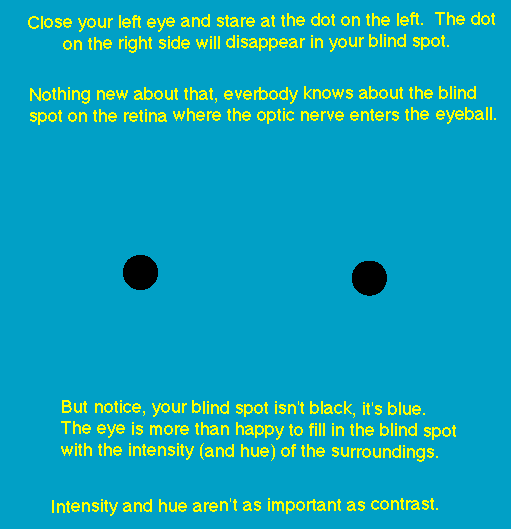
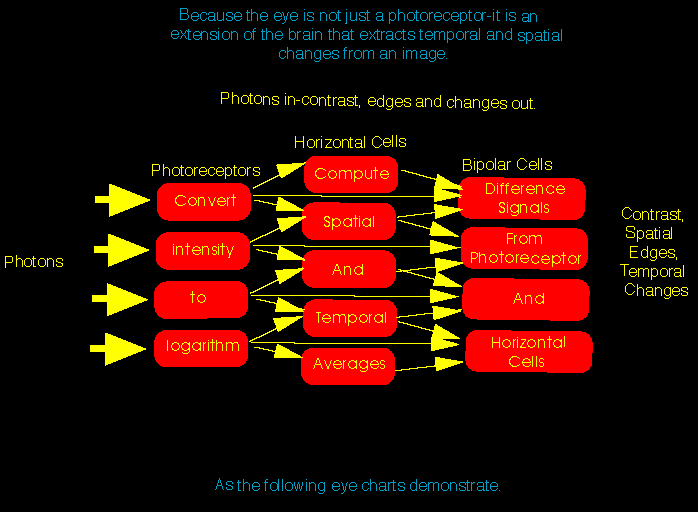
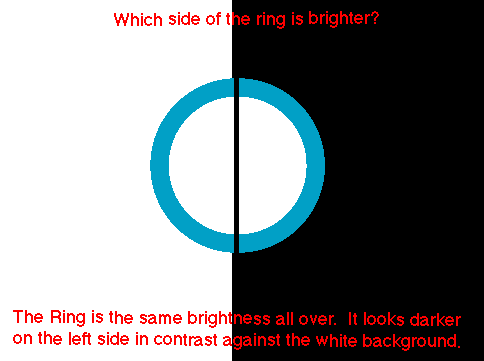
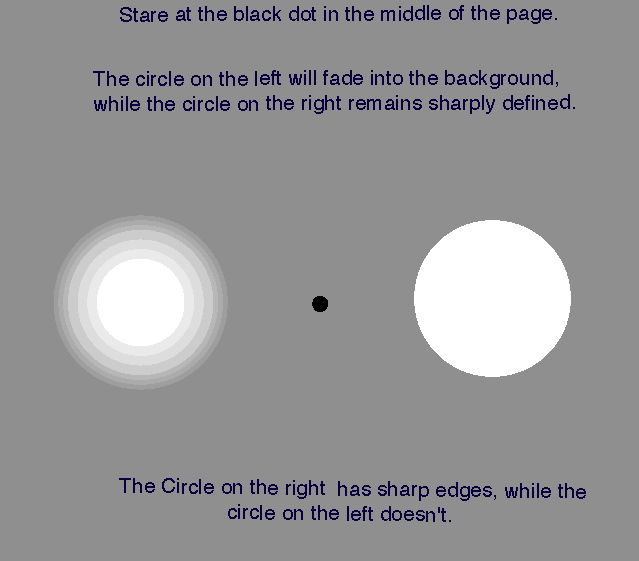
The longer and harder you stare at a guide star hiding behind a constantly illuminated crosshair, the more you try to keep your eye from jittering, the worse you'll do because its completely contrary to how your retina works. PulsGuide, by blinking the crosshair introduces change in the image, PulsGuide works with your retinas to keep your vision at maximum sensitivity. As a result you can work with fainter guide stars, guide more comfortably, get better astrophotographs.
|